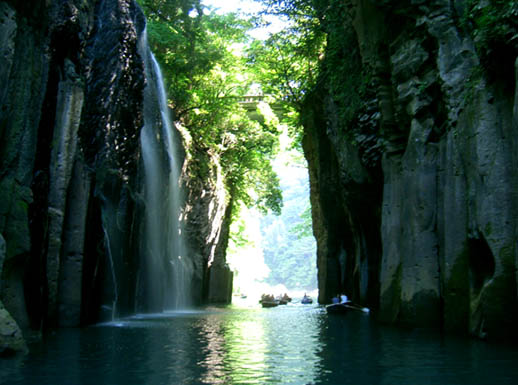
Takachiho, located in Northern Miyazaki-ken, is a beautiful, mountanous area. I have heard that bears can still be found in the surrounding forest, but have yet to see one. Also the aincent Kagura dance, the dance that represents the creation of Nippon (including the part about luring Amaterasu out of hiding in a cave in Aso), is performed in an isolated pocket of country deep in the mountains around here, for more than 24 straight hours by a die hard group of people carrying on the traditions of old (if you are interested in learning about Kagura, the Kagura-en in Namino has a guided tour, performances, and a (very boring) instructional video that you can experience, and you can learn how to make your very own soba with your hands. on a serious note, the soba soft serve is kick ass here- coming from Kumamoto City you can find the Kagura-en off of the 57, just past Takimurozaka). This particular location is Takachiho-kyou, or Takachiho Gorge.
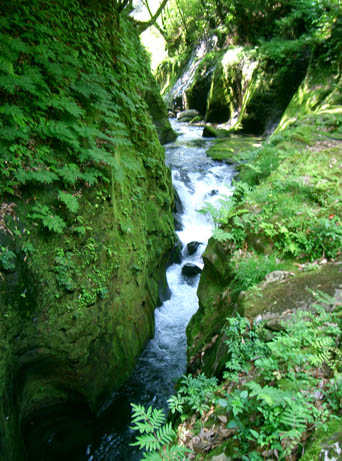
Takachiho Gorge is much different than Kikuchi Gorge. It's smaller, the geology is much different (made of columnar basalt, like the stuff in my former post about the Oita coastline and devil's postpile), and there are tons of salamanders to be found in some of the still ponds. It's so strange to see such an abundance of amphibians (and reptiles for that matter), whether they be frogs, toads, or salamanders. You just don't see too many of them in Southern California these days. If amphibians are truly dependable as indicator species (meaning that you can get an approximate idea of the condition of the environment based on their abundance and health), then Central Kyushu's watersheds are in extraordinary condition, especially in this day and age. As I type, I am listening to the din of the thousands of frogs that inhabit the rice field right next to my home, and am already dreading their sounds being replaced by human noise when I eventually move on from my patch of inaka.
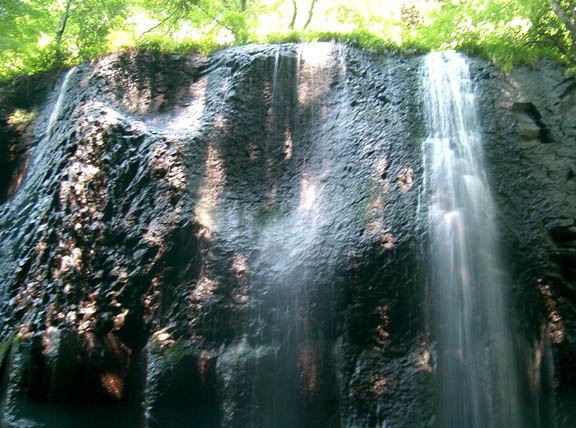
Water is such an awesome subject to photograph. In the gorge, water seeps out of rock where ever it wants to. It weeps out where you would least expect it, such as out of the middle of a sheer cliff of solid basalt, or out of small spigots as if the Gods wanted to create subtle faucets just for the hell of it. By the way, this basalt came from the same eruption that formed Aso. Now that was an eruption of mass proportions! Mount Saint Helens, Pinatubo, and Vesuvius combined wouldn't even compare to the fury bestowed upon Aso by Vulcan (as far as I know Japan doesn't have a deity as specific or as powerful in regards to volcanism as Vulcan, from the Greek pantheon, or Pele, hailing from Hawaii).
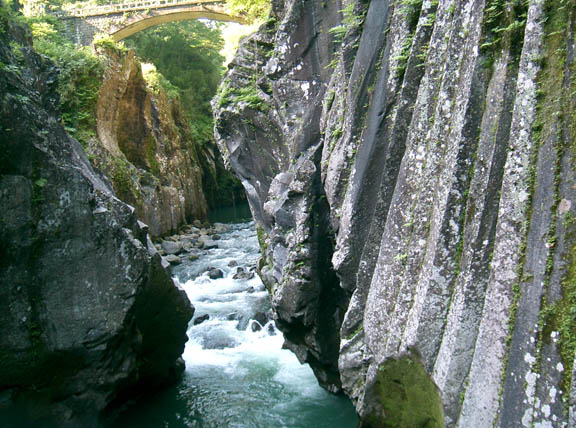
Here you can see the columns of frozen basalt, and imagine the rising tubes of lava as they must have puched upwards through the earth, creating a seemingly impervious mass of solid rock. Water, slowly and patiently, wore away on the rock, and percolated into microfissures, slowly rubbing away with little visible effect for a long time, from the perspective of the small animals who were born, lived, and died, as well as their offspring and their offspring's offspring. The friction of water dragging itself, and debris, along the same path over time made a subtle cut into the foundation of the stone, which deepend with time. If you look at this from our own timeline, as opposed to a geological one, then it is indeed hard to see how this could happen. I think that everyone could benefit from applying the geological timescale perspective, that we look at works of nature, to socioeconomical issues, political issues, and environmental issues as well (but that's asking everyone a little too much I feel). Discounting the future is the trend of today, but eventually someone is going to have to pay the costs of the compouding interest rates applied to the credit which we so freely use.
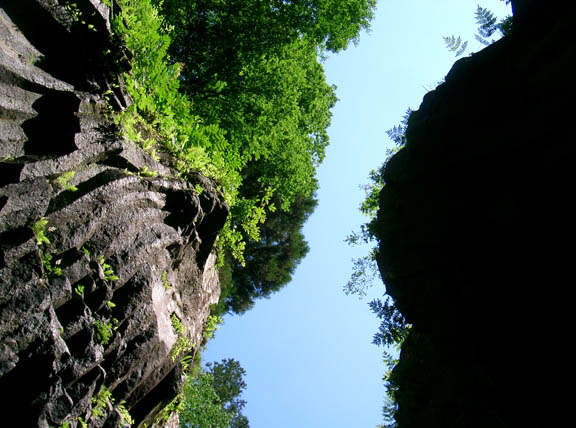
The best views from Takachiho Gorge come from taking a row boat out on the river. 1,500 yen buys you 30 minutes on the water. There is one really challenging bend in the river where everyone piles up, as it channels into a deep, rapid curve that wreaks havoc on the hydrodynamics of the boat. Apart from this, you can easily make it up the river and back down in under 20 minutes if you have a basic knowledge of rowing. My favorite part of the excursion was taking the boat under the waterfalls- my Central Kyushu version of Bigfoot Rapids.
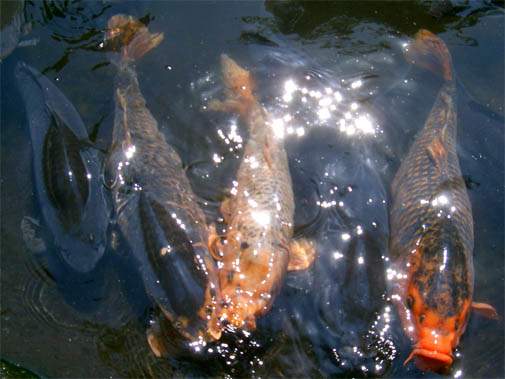
They also have a small koi pond full of... you guessed it... koi. I remember visiting a koi pond at a temple with my family when I was 5. It was then that my older brother Justin taught me something that I would always remember. He hawked a big green loogie, let it bungee down to the waiting mass of carp, and we watched as they started to hoover in the water in anticipation of the morsel even before it smacked into the water. A big fish eagerly sucked it up, and continued sucking the surface, asking for more. "Eeeeeewwww!" was how I displayed my genuine disgust/fascination. Shortly after, we were both trying our hardest to produce loogies for the vicious sucking maws of the ravenous koi until we ran out of phlegm and saliva. Ah, the joys of youth!
That don't look like Montana! Nice photo.
I've been planning a trip to go there this summer. Lots of info in Japanese, thanks for the great information in English!
No problem, thanks for checking out the site.